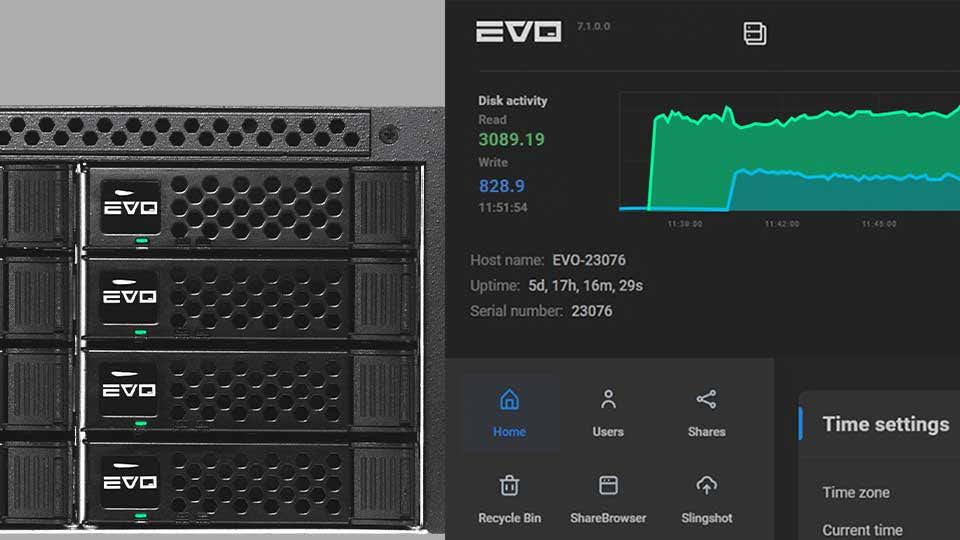
Ever feel like everyone’s scrolling past your startup in a digital blur? You’re not alone. Grabbing attention in today’s online world is a constant battle, especially for young companies. But there’s a way to cut through the noise and forge deeper connections with your audience: video marketing.
Video is a powerful tool for attracting eyeballs, explaining complex ideas, and building a strong brand identity. Studies show that having a video on your landing page can increase conversion rates by up to 80%, and that viewers retain up to 95% of a message conveyed through video (compared to just 10% from text).
In this article, we’ll explore the importance of video marketing for startups, provide tips for creating compelling content, and discuss key elements to consider when building your first creative department.

Video Marketing For Startups: Creating Content
There is a wide range of video content you can create as a startup to get through to your audience:
- Explainer Videos: Clearly communicate your product or service’s value proposition.
- Customer Testimonial Videos: Build trust and credibility by showcasing satisfied customers.
- Behind-the-Scenes Videos: Humanize your brand and offer a glimpse into your company culture.
- Product Demos and How-To Tutorials: Showcase features in action with step-by-step instructions.
- User-Generated Content (UGC) and Short-Form Videos: Generate buzz and encourage social sharing.
By experimenting with various video formats, you can discover which content resonates most effectively with your target audience, driving higher engagement and ROI. And don’t stop at just one. Incorporating a diverse range of video content into your marketing strategy can help you nurture leads throughout the buying journey, build brand loyalty, and ultimately achieve your business goals.

Best Practices For Video Marketing
Effective marketing videos are essential for capturing attention, conveying messages, and driving engagement. By following proven best practices, you can create content that resonates with your audience, builds brand awareness, and drives results. Here’s how.
Keep It Short
How long should a marketing video be? While longer videos can be effective for certain content, a good rule of thumb is to keep your marketing videos under two minutes long. This shorter format allows viewers to quickly grasp your message and encourages them to watch to the end. Exceptions typically include social media videos (which should get your point across in the first 5-15 seconds), in-depth tutorials or product demonstrations (which could be several minutes long), or thought leadership content (which could be an hour or more).
Tell A Story
Storytelling is key for any video production. Develop a compelling narrative that connects with your target audience and showcases your brand’s value proposition. Use relatable characters who embody your brand’s values and resonate with your audience.
Sell The Problem
Remember in The Wolf of Wall Street when Leonardo DiCaprio’s character, Jordan, asks his new sales team to sell him a pen? All the unsuccessful pitches failed to recognize a fundamental selling point: until a need is recognized, it simply doesn’t matter how great your product or service is. You should first sell the problem, then sell the solution.
In your video content, highlighting the problem that your product or service solves can create a stronger emotional connection with your audience. It helps your audience feel seen, and builds up credibility before you introduce your product. Identifying the pain points your target market experiences then demonstrating how your solution addresses these issues is a great recipe for marketing your product.
Be Authentic
It’s important that your culture and tone show through in your video marketing. For instance, Dollar Shave Club’s launch video is a perfect example of showcasing brand personality and value proposition through video. They clearly had fun with it, and it was 100% on-brand for their product and their audience.
Ask For What You Want
Clearly state what you want viewers to do after watching your video. Whether it’s visiting your website, subscribing to your newsletter, or making a purchase, a call to action (CTA) can help keep your viewers engaged and push them further along your marketing funnel.
Show People, Not Just Products
It’s best to put a human face to your brand. You don’t need to hire a spokesperson (though, that’s not a bad idea). Showcasing your team, company culture, and the impact you’re making fosters a deeper connection with potential customers and investors.
A customer testimonial video is a great way to put more people in your video content. Stock footage can be an easy way to humanize your videos if you don’t have staff jumping up and down to go on camera.
Balance Video Quality And Production Budget
Many viral videos and social campaigns are shot on cell phone cameras, and they are perfectly on brand and suitable for their video placement. On the other hand, a low quality video with bad lighting, unflattering camera angles, and excessive “AHs” and “UMs” can reflect poorly on your brand. It’s important to manage expectations so you get the best video quality within your budget.

Consider Audio Enhancements
Even the greatest video will suffer if the audio quality is bad. While you don’t need to build out a recording studio in the break room, a bit of investment in audio tools—like removable soundproofing panels and a decent microphone—can go a long way in polishing the overall video quality.
Use your editing software to improve audio quality as well. Simple features like gain adjustment can boost overall volume or reduce noise. By exploring the basics of tools included in your editing software like compression, limiting, and EQ, you can create a more polished and professional audio experience.
Background music can also add depth and set the right tone for your content. You can get royalty-free music tracks to use in marketing videos from a variety of websites, such as Artlist, Epidemic Sound, AudioJungle, Free Music Archive, YouTube’s Audio Library, and more. Just make sure the volume level isn’t too loud. And don’t forget to properly license your background music, even if it’s free.
Keep Experimenting
You’ve likely heard this already as an entrepreneur: If at first you don’t succeed, brush it off and try again. Maybe your audience didn’t click with the message or call to action. Maybe it came across too scripted. Maybe you posted on the wrong channel. Keep experimenting with different video types, durations, placements, and styles. With Reels and Stories disappearing in a blink, there’s always another video, another angle, another opportunity to try again.

Where To Start: Building A Strong Foundation for Video Marketing
If you’re ready to put gasoline on the fire and finally get your startup off the ground with video marketing, you may be wondering: where do I even start?
While much of this is covered in our two-part series: Building Your First Creative Team, here are some best practices about getting started with an in-house video team specifically for startups.
Hire A Creative Team
- Team Size: You may be tempted to hire just one creative team member to get started, but two is the minimum recommended team size for a creative department. Between pre-production (planning), production (filming), and post-production (editing), creating video content is a big undertaking. Continually relying on just one person for every stage of this process is not ideal.
- Skillset Diversity: Aim for team members with a diverse range of skills, including video production, editing, scriptwriting, motion graphics, and graphic design. This will ensure that your videos are well-rounded and visually appealing.
Invest In Essential Equipment And Software
- Cameras: Choose cameras that align with your budget and video production goals. Consider factors such as image quality, resolution, and features like wireless tether and cloud backup.
- Audio Equipment: Invest in high-quality microphones and audio recording equipment to ensure clear and professional sound.
- Editing Software: Select a video editing software that meets your team’s needs and preferences. Popular options include Adobe Premiere Pro, Final Cut Pro, and DaVinci Resolve.
- Workstations: High-performance workstations are crucial for video editing and rendering. Consider factors such as processor speed, RAM, graphics card, and storage capacity—and make sure they meet your editing software’s minimum requirements.
- Storage Infrastructure: A reliable video storage server can streamline workflows, improve collaboration, and reduce downtime. Consider factors such as scalability, centralized access, and remote workflow capabilities.
You can learn more about each of these essentials in Building Your First Creative Team. For now, let’s focus on that last one: storage infrastructure.

Why Startups Need Video Storage
Startup life is fast-paced. There’s no time to waste uploading and downloading files to various hard drives and cloud storage buckets, or stop the creative process in its tracks to back up files and folders by hand. And there’s certainly no room for struggling to collaborate with your team on edits scattered across different devices, or not being able to find the clips you just shot in your disorganized media library. Without the right tools, your dreams of video marketing success can quickly turn into workflow nightmares.
A video storage server is going to save your team significant time and resources in the long run. The right shared storage solution can offer faster performance, better collaboration, and a video editing workflow that aligns with your startup’s overall strategy. It’s going to consolidate all your media assets, video projects, and other files into a centralized location for the entire team to create the powerful marketing messaging that will take your startup to the next level.
That’s where a video server like EVO comes in.

The Best Storage Solution For Video Marketing: EVO Shared Storage
EVO is a secure, high-performance shared storage solution that empowers your team to create, edit, and share video content seamlessly. Purpose-built for video production teams of all sizes, EVO helps companies shed the “startup” label by supporting the successful execution of compelling video marketing strategies.
From the CMO to your summer intern, everyone on your team can access and edit projects simultaneously. And EVO comes with powerful and easy-to-use software that makes finding, previewing, sharing, and backing up files effortless. From live streaming corporate events to creating short form video for social media, EVO helps brands around the world create eye-catching content that captures the attention span of their potential customers.
But that’s not all. EVO also delivers:
- Blazing-fast performance. EVO is fast enough to edit on without lag or downtime, so you can focus on creating, not waiting.
- Seamless collaboration. Everyone can work together on projects in real-time, accessing and editing video files simultaneously.
- Scalability that grows with you. As your startup grows, EVO scales effortlessly to accommodate your needs. Unlimited users included.
- Expansive compatibility. Adobe Premiere Pro, DaVinci Resolve, Apple Final Cut Pro, Avid Media Composer, and more—use whatever creative tools you want with EVO shared storage.
- Secure remote access. Add SNS Cloud VPN for secure remote access anywhere in the world. No additional hardware required.

Focus on What Matters: Building Your Startup Dream
Let EVO handle the heavy lifting of video storage and collaboration. With captivating video content and a rock-solid storage server as a foundation, your startup is poised to take the world by storm. So, grab your camera, and let’s roll.
See why thousands of startups and corporate marketing teams around the world are choosing EVO for video storage and workflow.
